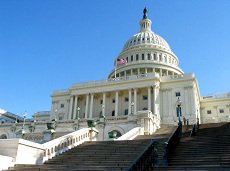
As part of the mandate to improve the federal customer experience, government agencies are hiring Chief Customer Officers (CCO) to lead the way. In general, a CCO is an executive responsible for the total relationship with an organization’s customers and to provide a single vision across all methods of customer contact.
This is a relatively new position. And, as with any new position, there are going to be problems. According to a November 2014 report (access requires subscription) by Forrester Research, Inc. entitled “Predictions 2015: Federal Customer Experience Finally Turns The Corner,” CCOs “will face opposition from some federal CIOs who are wary of losing budget and influence to upstarts and hesitant to embrace the customer-centric business technology agenda.”
While the creation of the CCO is a good step, I don’t think it is strong enough. If government agencies want to fully optimize their customer engagement, they need to embrace today’s digital customer. That would entail a new position — chief digital officer (CDO).
Most of today’s customers have embraced technology wholeheartedly. Increasingly, customers want to shop, gather information and conduct business via digital devices—be it a laptop, smartphone, tablet or other device. Governments and public sector agencies need to fully understand this to truly provide a customer experience that is on par or better than the private sector.
This is why I believe governments need a CDO. Note that the CDO is not limited to the customer either. To truly improve the customer experience, government and public sector agencies (and the CDO) need to address employees as well.
Federal CX can be greatly improved if employees are fully engaged and given the tools to be more efficient and productive. With the proper solution and tools, employees could be able to access comprehensive customer interaction histories, contextual knowledge, and customer-related information — all from a single location. Real-time, “next best action” guidance helps employees deliver fast, effective customer service by phone, email, chat, and Web self-service—while routing and load balancing can help enhance enterprise efficiency and offer visibility into day-to-day operations.
Armed with this information, organizations can analyze customer interactions and employee activities, and then use this insight to engage their staff, gauge productivity, target coaching efforts, and improve employee support systems. As employees grow more engaged and productive, they are more apt to deliver high-quality service that can better engage customers.
All of this requires government agencies and public sector organizations to fully understand and embrace today’s digital citizen, digital employee and digital solutions to help them fully engage appropriately. That requires something more than a CCO. It demands a CDO with all of the digital expertise needed to bring digital citizens, digital employees and solutions together to meet federal CX requirements.
-

mafa
Nov 01, 2018
-
-
Up
0
Down
-
-
More
-
Cancel
Children